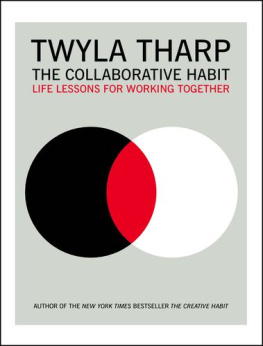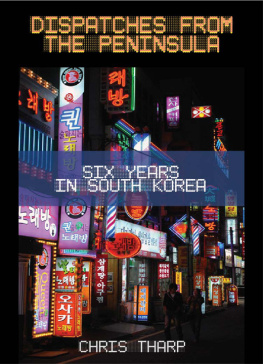Dan Tharp - Africa Lost
Here you can read online Dan Tharp - Africa Lost full text of the book (entire story) in english for free. Download pdf and epub, get meaning, cover and reviews about this ebook. year: 2013, publisher: St. Martin’s Press, genre: Romance novel. Description of the work, (preface) as well as reviews are available. Best literature library LitArk.com created for fans of good reading and offers a wide selection of genres:
Romance novel
Science fiction
Adventure
Detective
Science
History
Home and family
Prose
Art
Politics
Computer
Non-fiction
Religion
Business
Children
Humor
Choose a favorite category and find really read worthwhile books. Enjoy immersion in the world of imagination, feel the emotions of the characters or learn something new for yourself, make an fascinating discovery.

- Book:Africa Lost
- Author:
- Publisher:St. Martin’s Press
- Genre:
- Year:2013
- Rating:4 / 5
- Favourites:Add to favourites
- Your mark:
- 80
- 1
- 2
- 3
- 4
- 5
Africa Lost: summary, description and annotation
We offer to read an annotation, description, summary or preface (depends on what the author of the book "Africa Lost" wrote himself). If you haven't found the necessary information about the book — write in the comments, we will try to find it.
Africa Lost — read online for free the complete book (whole text) full work
Below is the text of the book, divided by pages. System saving the place of the last page read, allows you to conveniently read the book "Africa Lost" online for free, without having to search again every time where you left off. Put a bookmark, and you can go to the page where you finished reading at any time.
Font size:
Interval:
Bookmark:

The author and publisher have provided this e-book to you for your personal use only. You may not make this e-book publicly available in any way. Copyright infringement is against the law. If you believe the copy of this e-book you are reading infringes on the authors copyright, please notify the publisher at: us.macmillanusa.com/piracy.
Contents
Introduction
The helicopter has become an iconic image of war. It changed the way soldiers were able to deploy on the battlefield, dramatically reduced the mortality rate of wounded soldiers, and delivers hell fire and brimstone to the enemy. To most Americans, the Bell UH-1 Huey in Vietnam was synonymous with the war itself. To the soldier in the field it was a ride in and a lifeline out.
The American military first saw its utility in the Korean War as an airborne ambulance and cargo carrier. The technology for an offensive weapon did not yet exist. However, the British were putting the new aircraft to good use for counterinsurgency (COIN) missions by the Special Air Service (SAS) and Special Boat Service (SBS) in the Malayan Emergency that was fought between 1948 and 1960. Special troops were infiltrated and exfiltrated from deep into the jungle, bypassing traditional methods of troop movement with great effectiveness.
The platforms for offensive capabilities began to emerge, and platforms such as the Huey and Cobra gunships came to prominence on the battlefield. They have continued to improve and are integral to the missions carried out today. It is a tool that our enemies fear.
With the start of the Cold War, the United States trained its military to fight against the Soviet Union in set piece fashion. The Korean War was fought against a uniformed and recognized foe. Vietnam threw a wrench into the status quo, yet the veterans and policymakers who had lived through and fought in World War Two tried to apply traditional methods and tactics to fight a guerilla army.
Late in 1965, when the first air-mobile teams fought in the Ia Drang valley against regular North Vietnamese Army (NVA) formations, they did well. It was a morale booster for the Pentagon and the public that we could insert troops via a chopper onto the doorstep of the enemy and defeat them. History then tells us about the failure of the powers that be to further adapt methods to fight against a guerilla army. Col. David Hackworth recognized this early in the Vietnam War and wrote the famous Vietnam Primer. He believed that with superior tactics and mobility we could learn to fight the Viet Cong and win by, in his words, Out G-ing the G.
Perhaps the most innovative use of the helicopter and special forces in Vietnam was by the Mobile Strike Force and the lesser known Eagle Flight, a heliborne tactic to find, fix, and kill the Viet Cong.
The Eagle Flight typically consisted of eleven helicopters, six carrying paratroops and the others acting as gunships. Soldiers were set down in strategic positions to cordon off groups of insurgents, either closing with them on foot or being blasted from above. Due to the terrain of Vietnam, it was often difficult to find the ideal kill zone.
While the hot spot for the Cold War was winding down in Vietnam, the African continent was waging its own war against communism. The power vacuum left by the decolonization of several nations allowed Soviet-bloc- and Chinese-backed revolutionaries to set up power and fight their way into power.
A small, independent country stood alone against the world and the communist tide. Battered by sanctions and abandoned over politics with the United States and Great Britain, the nation of Rhodesia was enduring attacks and infiltrations of its sovereign borders. Communist terrorists were harboring in Mozambique, Zambia, and Botswana and making incursions into Rhodesia, killing farmers, destroying livestock and crops, and creating a panic among the native tribes and the general population.
Backed by the Chinese and Russians, Robert Mugabes Zimbabwe African National Liberation Army (ZANLA) and Joshua Nkomos Zimbabwe Peoples Revolutionary Army (ZIPRA) forces intended to retake Rhodesia from the Ian Smith government and restore proper ownership to the envisioned nation of Zimbabwe. Early CIA records show that the Johnson administration recognized that this freedom movement was clearly an attempt to expand communism. Great Britain resented the declaration of independence of Rhodesia in 1965 and was not interested in helping the wayward nation in retaining it freedom. Ronald Reagan addressed Rhodesia in a 1976 radio broadcast, recognizing their fight against communism.
The Rhodesians were on their own to preserve the land that they had cultivated into the literal Breadbasket of Africa. From the early 1960s onward, they were faced with a ruthless insurgency. Though they had offered troops in World War II and the Malayan Emergency to their former patron, Britain, their own standing army was very small and their main defense force was the British South Africa Police (BSAP) and reservists.
It has been stated that even at the height of the insurgency, Rhodesia never had more than a few thousand fighting men on the ground at any given time. With thousands of miles of borders to protect, the aim of the army was to meet problems with solutions that worked rather than adhere to classical doctrine for its own sake. Several soldiers that had served with the British SAS during the Malayan Emergency understood the nature of this type of warfare and were able to help put together an army suited to the task. This drive to protect the only place they called home produced concepts and soldiers that are still studied today to learn lessons that can help our current struggle against insurgents world-wide.
With the 1964 murder of the farm family of Petrus Oberholtzer by Zimbabwe African National Union (ZANU) terrorists, the Rhodesian Bush War began in earnest. Political dissidents were imprisoned and an attempt to maintain the safety of the nation went full steam ahead. Along with reactivation of the Special Air Service in the early 1960s, more and more men were recruited to join the army. Rhodesia needed fighting men and solutions to effectively stop a numerically superior force.
Constituted in 1961, the Rhodesian Light Infantry (RLI) was the backbone of the Rhodesian Security Forces. Without overflowing manpower and resources, which offers the flexibility to specialize, Rhodesian soldiers had to fill the roles of everything from leg infantry to special operationscapable forces. The SAS and the Selous Scouts were formed to hit the enemy where it hurt and use pre-emptive force to stop insurgents from making their way to the borders. These special forces operated mainly on externals into the surrounding countries to kill and destroy the bases from which insurgents were launched. As the fighting intensified, the RLI would join in those external operations with astounding success.
With so few men and limited air power, the RLI turned itself into a powerhouse of light infantrymen. 1st RLI Battalion consisted of three commando groups along with a support commando group. The TO&E of each commando called for a hundred men. The average muster at any given time was around seventy. The commando was divided into five troops consisting of twelve-man patrols. These patrols consisted of three four-man sticks. The support commando was trained in mortars, engineering, and anti-tank warfare. In the field, they often acted as a regular commando group.
As the tempo of the war increased, so did the need for manpower. A worldwide recruiting campaign ensued. Sympathetic media such as the new Soldier of Fortune magazine focused on stories of the nations plight and openly wrote about the need for volunteers and how they could join the army. The drawdown in Vietnam left a large swath of experienced combat veterans without a war to fight. Among many Americans, there was a bitter taste in their mouths, having walked away from a twenty-year effort to fight communism in Vietnam. It is estimated that around three hundred Americans volunteered to serve in Rhodesia.
Next pageFont size:
Interval:
Bookmark:
Similar books «Africa Lost»
Look at similar books to Africa Lost. We have selected literature similar in name and meaning in the hope of providing readers with more options to find new, interesting, not yet read works.
Discussion, reviews of the book Africa Lost and just readers' own opinions. Leave your comments, write what you think about the work, its meaning or the main characters. Specify what exactly you liked and what you didn't like, and why you think so.






